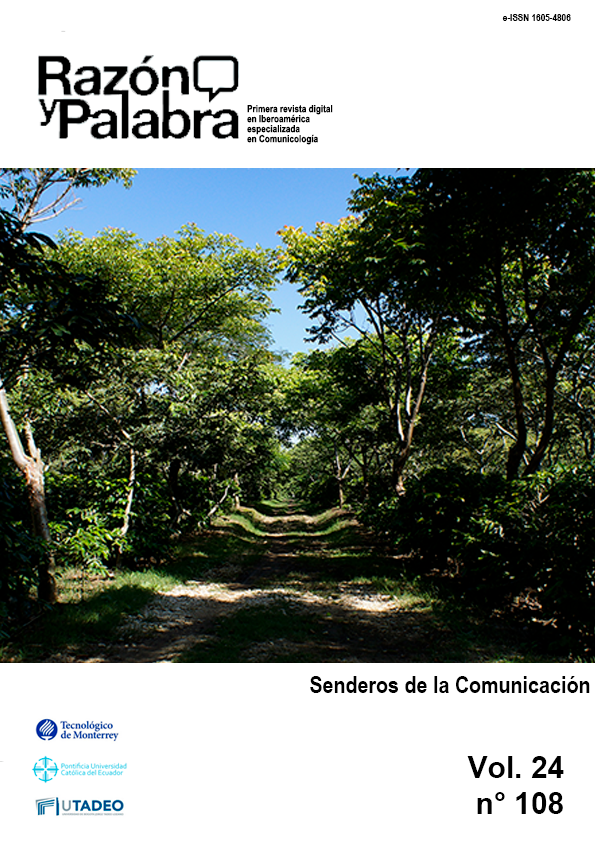Las tecnologías digitales: ¿una vidriera de signos?
Main Article Content
Abstract
This article uses a semiotic approach to develop an analysis of a key communicational phenomenon in contemporary societies that is associated with the use of social media of both protagonists of the Netflix series You – Joe Goldberg and Beck Guinevere (specifically Instagram, Twitter and Whatsapp). We aim to study the ways in which they participate in communication processes with the technology available in social media. The perspective is immanent: neither audience reception nor the economical or historical aspects of this process are considered, only its sign-generating dimension. How do signs function in the everyday use of social media in this fiction? What kind of interpretation these characters make of social media? What changes have our ubiquitous digital media introduced in communicational behavior, in the ways of generating meaning? From a semiotic perspective, we analyze a universal element of the human condition: the use of signs to communicate with each other.
Downloads
Article Details
References
Benveniste, í‰. (1971). Problemas de Lingüística General. Editorial Siglo XXI.
Carlson, N. (2010). Psychology the science of behaviour, Canada: Editorial Pearson.
Díaz, M. (2020, 25 de enero). Stalker, la nueva serie de Kevin Williamson. Espinof. Recuperado de: https://www.espinof.com/canales-tematicos/stalker-la-nueva-serie-de-kevin-williamson-llega-en-noviembre-a-tnt-espana
Eco, U. (1975). Tratado de la semiótica general. Editorial Lumen.
Espósito, R. (2009). Comunidad, inmunidad y biopolítica. Editorial Herder.
Fernández, García B. (2015). Paradigma indiciario. Contribución de la huella al conocimiento literario. (Tesis doctoral). Universidad de Ganada.
Gibson, J. (1967). Affordance. Editorial Universitaria.
Girard, R. (1961). Mentira romántica y verdad romántica. Editorial Grasset.
Goffman, E. (1970). Estigma: la identidad deteriorada. Editorial Amorrortu.
Goffman, E. (1981). Forms of Talk. University of Pennsylvania Press.
Hidalgo, S. (2000). Tú frente al yo. Problemas de Enunciación. Hermosillo.
Kerbrat Orecchioni, C. (1997). La Enunciación. Editorial Edicial.
Leone, M. (2017). Semiótica de la reputación. Signa 26: 245-268.
Leone M. (2019). Transparencia y opacidad en las ideologías semióticas contemporáneas: Un modelo semiótico para estudiar el cambio cultural. Revista Chilena de Semiótica 10: 37-57.
Leone, M., & Pezzini. (2013). Isabella. Semiotiche della soggettività. Editorial Aracne.
Lotman, I. (2000). La semiosfera. Fondo Editorial.
Peirce, Ch. The Collected Papers of C. S. Peirce. Charles Hartshorne, Paul Weiss, & Arthur Burks (eds.). Harvard University Press, 1936-1958.
Sibila, P. (2008). La intimidad como espectáculo. Fondo de Cultura Económica.
Sibila, P. (2012). Redes o Paredes. Buenos Aires: Editorial Tinta Fresca.
Verón, E. (1980). La semiosis social. Editorial Gedisa.







